Types of dog food
November 30, 2018 | By David Jackson, AllAboutDogFood.co.uk
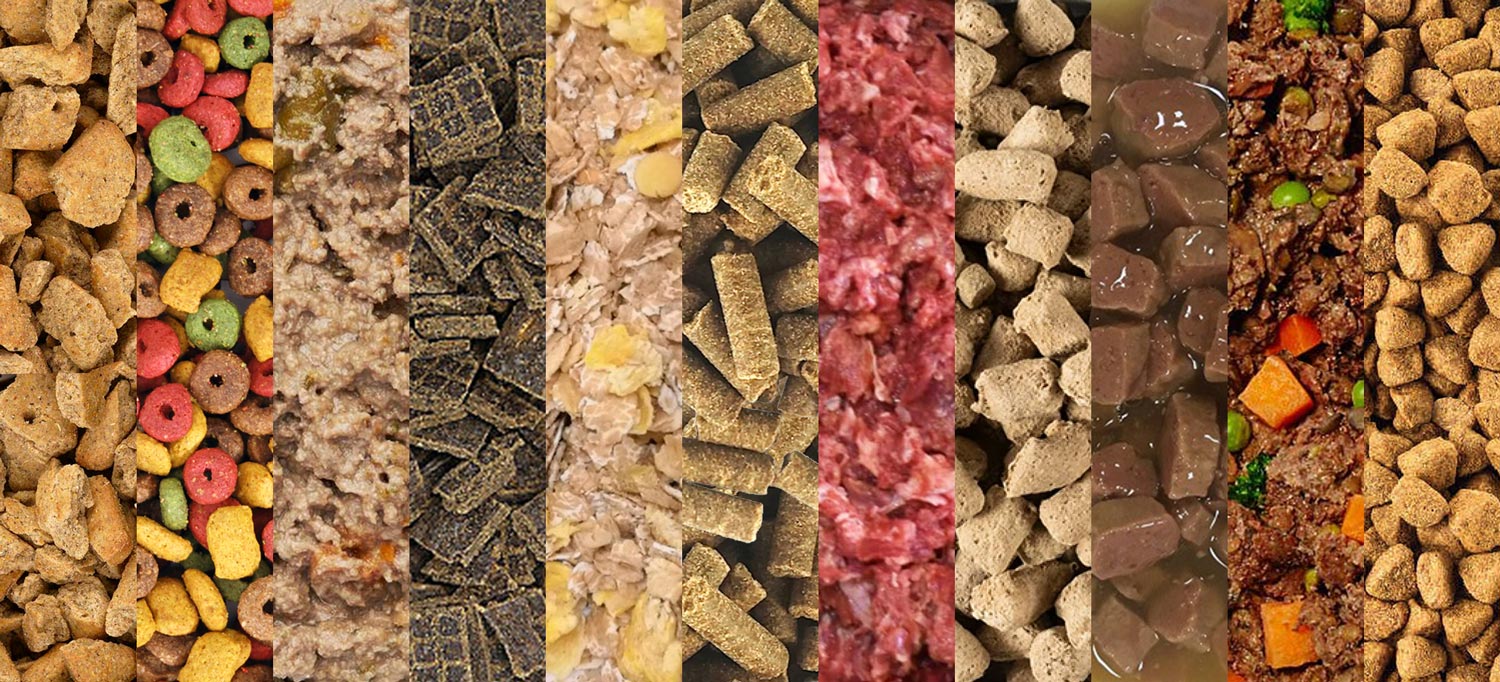
Commercial pet food is advancing in leaps and bounds and long gone are the days when choosing a food simply meant picking between tins or bags of biscuits. These days, there are all sorts of options to cater for any and all preferences - so many in fact that deciding which one to go for can be quite overwhelming. In this article, we'll look at all of the different categories of commercial pet foods that are currently available and their associated pros and cons.
Remember that different types of foods can be fed together or rotated so don't feel like you need to stick to just one or two of the options below. Take a look at our guide to mixing different dog foods here.
There are really two main ways of classifying foods - the first relates to whether the food contains everything your dog needs and the second describes how the food was prepared.

1. Complete vs Complementary
Complete foods
Complete foods are by far the most popular choice for dog owners in the UK. They can come in many forms including dry, wet and raw.
In order to be legally labelled as 'complete', a food must contain every nutrient required by a dog in sufficient amounts to keep the dog healthy which means it should not be detrimental to feed it alone for an extended period.
The bar for nutritional completeness in Europe is set by the European Pet Food Industry Federation (FEDIAF) - you can find their Nutritional Guidelines For Complete Pet Food here. Although these guidelines have been receiving increasing amounts of criticism for being based on outdated and often flawed data and for potentially being biased (read more here), they are currently the only figures we have which is why we too use them as our basis for categorising a food as 'complete' or not.
In order to meet FEDIAF's nutrient levels, the vast majority of complete foods incorporate a broad range of added vitamins and minerals. While some minerals can be added in an 'organic' or 'natural' form, most of these supplements are synthetically produced which has given rise to criticism from some natural feeding advocates.
Complementary foods
Complementary foods are usually wet or raw foods that don't contain the full range or the right balance of nutrients required to keep a dog fully fit and healthy and so have to be fed alongside other foods like complete foods, home-prepared foods or mixer biscuits. Examples would include 'toppers' which are added to food to increase palatability, raw meat cuts (like chicken wings etc) and wet foods that are specifically designed to be combined with a mixer.
Mixer biscuits
Mixers are essentially cereal based filler biscuits or muesli mixes, occasionally with added vegetables or herbs. They are far from nutritionally complete and have to be fed alongside a complete or suitable complementary food. Despite the fact that mixers have been losing popularity for decades (outside of the working dog community at least), the right mixer combined with the right wet or raw food can still be a great option for some dogs.
Complete foods, complementary foods and mixers can all range in quality from very good to very bad. For tips on separating the wheat from the chaff, click here.
2. Preparation method
Below is a list of the main pet food processing methods, all of which can come in complete or complementary forms.
Dry foods
The majority of British dogs are fed on dry foods. Their popularity certainly owes a lot to their convenience as they're available everywhere, they don't need any preparation at all and they don't have any special storage requirements.
Dry foods can be produced in a number of ways:
|
Extrusion is by-far the most common cooking method for dry dog foods. In the extrusion process, raw materials (usually pre-dried and ground ingredients in the form of powders) are mixed and passed through what is essentially a giant steam cooker. The mix is then passed through a 'die' where it is cut into the individual biscuits which are then rapidly dried with hot air, cooled and given a coating of oils to enhance their flavour.
A growing number of critics claim that the multiple levels of processing that are required to produce extruded foods and particularly the high temperatures they involve may destroy many of the natural nutrients contained in the ingredients, particularly vitamins, some amino-acids and enzymes. Supporters, however, advocate that the cooking process kills parasites and might actually increase digestibility.
Find extruded dog foods
|
|
Baking is an alternative cooking method that allows foods to be cooked at lower pressures than extrusion and therefore may leave more of the nutrients intact. Baking does, however, usually rely on a certain amount of wheat gluten to bind the biscuits. The process typically involves the biscuits passing slowly through a long oven atop a conveyor belt.
Find baked dog foods
|
|
Cold pressed dog foods are still relatively new on the scene but are growing in popularity rapidly as they present all of the advantages of more conventional dry food processing but without the potentially damaging high temperatures. Ingredients do, however, still have to be dried and ground before pressing and some, like grains, also have to be pre-cooked so there is a certain level of processing, but the final stage is certainly a lot less intensive than extrusion.
Find cold pressed dog foods
|
|
Air drying takes things one step further as the ingredients usually start the process fresh rather than ground or pre-cooked. The food is exposed to a current of heated air, gently removing the water through evaporation which is thought to reduce the damage to proteins, vitamins and enzymes compared to conventional cooking methods. Some air dried foods need to be rehydrated by adding water so, while these packs might seem small, the volume of food you get from them is considerably larger.
Find air dried dog foods
|
|
Freeze dried foods are created by first freezing and then gently heating the ingredients within a vacuum to remove any moisture. In this way, the nutrients undergo very little damage making it arguably the most 'natural' form of dry food available. Freeze dried dog foods also tend to be eye-wateringly expensive but they do have incredible shelf lives without the need for any artificial preservatives. As with some air-dried foods, many freeze dried diets require rehydration with water before feeding.
Find freeze dried dog foods
|
Wet foods
Wet pet foods have been losing some market share over the years but they remain a popular choice. They most often come in tins, trays, pouches and chubb rolls. Ingredients are blended and cooked before being vacuum sealed into their containers. They are then heat sterilised. The temperatures and durations of both cooking and sterilising can vary considerably but typically sterilisation involves temperatures in excess of 100oC for periods of up to 90 minutes. Raw feeding advocates believe that such high temperature levels are likely to damage some of the natural nutrients contained within the food. The vacuum sealing and sterilisation do, however, ensure a long shelf life without the need for any added artificial additives.
Wet foods, naturally, contain much more water than their dry counterparts. For some this makes wet foods a more 'natural' choice, at least compared to some dry food types like extruded foods. The high moisture content might also be beneficial for dogs that don't drink very much or those with a history or urinary problems, for example. The high water content does, however, mean that you have to feed much more of a wet food than you would of a dry which often makes wet foods a relatively expensive option.
Wet foods come in several forms:
|
Paté or loaf type wet foods can be identified by their firm, generally uniform consistency. Many owners slice or mash these foods before feeding.
Paté foods currently make up the majority of the wet food market and are especially popular with higher end producers.
In order to bind the ingredients and achieve the characteristic texture, paté foods need gelling agents and thickeners, some of which are fairly controversial. You can find out more here.
|
|
Chunks in jelly or gravy tins or pouches have been around for years and still account for the lion's share of the budget wet food market. In these foods the meat/vegetables/grain ingredients are visible within a liquid or jelly formula.
Find wet dog foods
|
Raw foods
|
If you have noticed the growing number of freezer units popping up in pet shops, raw foods are the reason. Raw feeding is regarded by many as the most natural way to feed a dog and over the past decade or so it has become the fastest growing feeding trend in the UK. Many raw feeders prepare their own diets for their dogs but a growing number of companies are developing pre-prepared complete (or 'balanced' - see below) raw foods, usually in the form of frozen blocks or nuggets, which provide all of the benefits of raw feeding with all the convenience of a conventional dog food. Ok, maybe not all of the convenience - transporting frozen foods for extended periods (for holidays and so on) can be tricky and having to thaw them over-night before feeding isn't as easy as opening a bag or a tin, but most raw feeders agree that it is a small price to pay.
However, raw feeding is by no means free from criticism. Many vets and industry experts have raised concerns over the safety and nutritional balance of raw foods. This is a topic of enormous, often heated discussion and is too big to cover here but we do have a great article on the subject here.
Like wet and dry foods, pre-prepared raw foods come in both complete and complementary forms but it is worth noting that a significant proportion of raw producers prefer to steer clear of synthetic vitamins and minerals, instead relying on the natural nutrients found in the right balance of meat, bone and offal (and, in some cases, fruit and veg) to provide everything a dog needs. Since these foods do not adhere to FEDIAF's guidelines for complete foods, they do not receive our 'nutritionally complete' logo. You can find out more in our guide to complete foods.
Find raw dog foods
|
Fresh foods
|
Another category of pet foods has recently started to emerge - fresh complete foods. The idea is that they provide a convenient version of home cooking so they tend to include a balanced selection of high-end fresh ingredients, cooked and packed in trays or pouches. With fresh ingredients and a low level of processing, fresh complete foods are likely to retain a high proportion of their natural nutrients, at least compared to conventional dry and wet foods.
Since no preservatives are added and since the food usually hasn't been sterilised like standard wet foods, fresh foods generally don't stay fresh for as long as we have come to expect from our pet foods. For this reason, most fresh pet foods need to be kept refrigerated even when sealed. In the fridge they typically last up to 14 days from the date of manufacture but they can also be frozen and defrosted later before feeding.
Find fresh dog foods
|
Dry foods
The majority of British dogs are fed on dry foods. Their popularity certainly owes a lot to their convenience as they're available everywhere, they don't need any preparation at all and they don't have any special storage requirements.
Dry foods can be produced in a number of ways:
Extruded foods
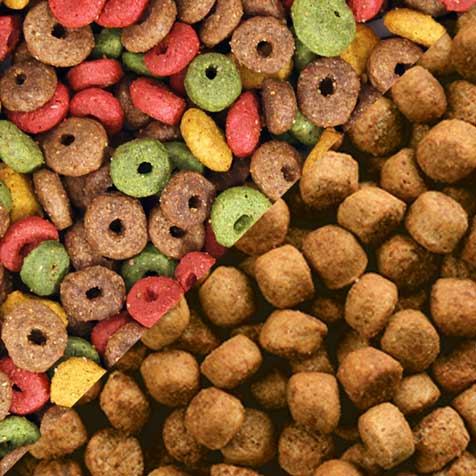 Extrusion is by-far the most common cooking method for dry dog foods. In the extrusion process, raw materials (usually pre-dried and ground ingredients in the form of powders) are mixed and passed through what is essentially a giant steam cooker. The mix is then passed through a 'die' where it is cut into the individual biscuits which are then rapidly dried with hot air, cooled and given a coating of oils to enhance their flavour.
Extrusion is by-far the most common cooking method for dry dog foods. In the extrusion process, raw materials (usually pre-dried and ground ingredients in the form of powders) are mixed and passed through what is essentially a giant steam cooker. The mix is then passed through a 'die' where it is cut into the individual biscuits which are then rapidly dried with hot air, cooled and given a coating of oils to enhance their flavour.
A growing number of critics claim that the multiple levels of processing that are required to produce extruded foods and particularly the high temperatures they involve may destroy many of the natural nutrients contained in the ingredients, particularly vitamins, some amino-acids and enzymes. Supporters, however, advocate that the cooking process kills parasites and might actually increase digestibility.
Find extruded dog foods
Baked foods
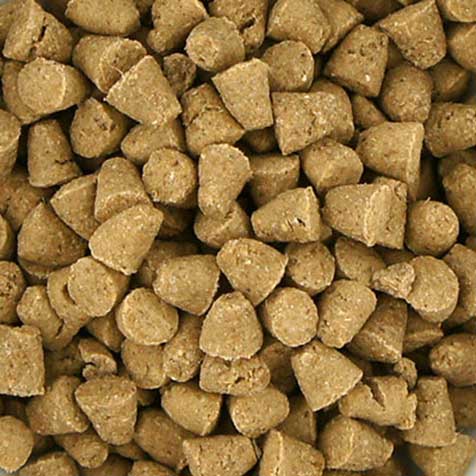 Baking is an alternative cooking method that allows foods to be cooked at lower pressures than extrusion and therefore may leave more of the nutrients intact. Baking does, however, usually rely on a certain amount of wheat gluten to bind the biscuits. The process typically involves the biscuits passing slowly through a long oven atop a conveyor belt. Baking is an alternative cooking method that allows foods to be cooked at lower pressures than extrusion and therefore may leave more of the nutrients intact. Baking does, however, usually rely on a certain amount of wheat gluten to bind the biscuits. The process typically involves the biscuits passing slowly through a long oven atop a conveyor belt.
Find baked dog foods
Cold pressed foods
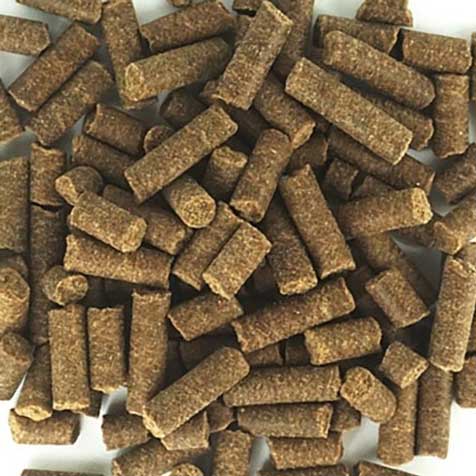 Cold pressed dog foods are still relatively new on the scene but are growing in popularity rapidly as they present all of the advantages of more conventional dry food processing but without the potentially damaging high temperatures. Ingredients do, however, still have to be dried and ground before pressing and some, like grains, also have to be pre-cooked so there is a certain level of processing, but the final stage is certainly a lot less intensive than extrusion. Cold pressed dog foods are still relatively new on the scene but are growing in popularity rapidly as they present all of the advantages of more conventional dry food processing but without the potentially damaging high temperatures. Ingredients do, however, still have to be dried and ground before pressing and some, like grains, also have to be pre-cooked so there is a certain level of processing, but the final stage is certainly a lot less intensive than extrusion.
Find cold pressed dog foods
Air dried foods
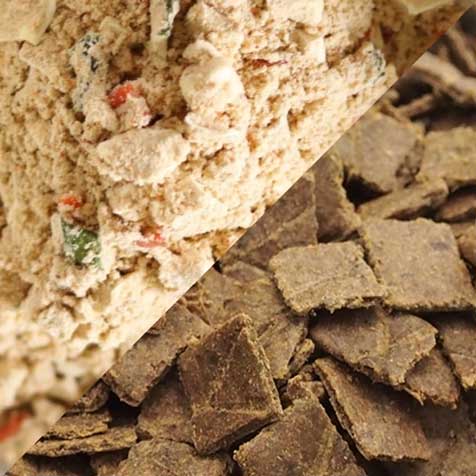 Air drying takes things one step further as the ingredients usually start the process fresh rather than ground or pre-cooked. The food is exposed to a current of heated air, gently removing the water through evaporation which is thought to reduce the damage to proteins, vitamins and enzymes compared to conventional cooking methods. Some air dried foods need to be rehydrated by adding water so, while these packs might seem small, the volume of food you get from them is considerably larger. Air drying takes things one step further as the ingredients usually start the process fresh rather than ground or pre-cooked. The food is exposed to a current of heated air, gently removing the water through evaporation which is thought to reduce the damage to proteins, vitamins and enzymes compared to conventional cooking methods. Some air dried foods need to be rehydrated by adding water so, while these packs might seem small, the volume of food you get from them is considerably larger.
Find air dried dog foods
Freeze dried foods
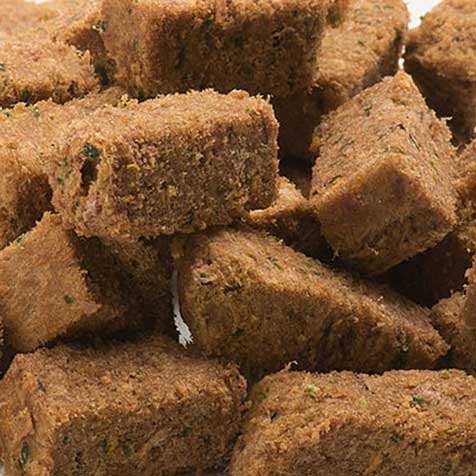 Freeze dried foods are created by first freezing and then gently heating the ingredients within a vacuum to remove any moisture. In this way, the nutrients undergo very little damage making it arguably the most 'natural' form of dry food available. Freeze dried dog foods also tend to be eye-wateringly expensive but they do have incredible shelf lives without the need for any artificial preservatives. As with some air-dried foods, many freeze dried diets require rehydration with water before feeding. Freeze dried foods are created by first freezing and then gently heating the ingredients within a vacuum to remove any moisture. In this way, the nutrients undergo very little damage making it arguably the most 'natural' form of dry food available. Freeze dried dog foods also tend to be eye-wateringly expensive but they do have incredible shelf lives without the need for any artificial preservatives. As with some air-dried foods, many freeze dried diets require rehydration with water before feeding.
Find freeze dried dog foods
Wet foods
Wet pet foods have been losing some market share over the years but they remain a popular choice. They most often come in tins, trays, pouches and chubb rolls. Ingredients are blended and cooked before being vacuum sealed into their containers. They are then heat sterilised. The temperatures and durations of both cooking and sterilising can vary considerably but typically sterilisation involves temperatures in excess of 100oC for periods of up to 90 minutes. Raw feeding advocates believe that such high temperature levels are likely to damage some of the natural nutrients contained within the food. The vacuum sealing and sterilisation do, however, ensure a long shelf life without the need for any added artificial additives.
Wet foods, naturally, contain much more water than their dry counterparts. For some this makes wet foods a more 'natural' choice, at least compared to some dry food types like extruded foods. The high moisture content might also be beneficial for dogs that don't drink very much or those with a history or urinary problems, for example. The high water content does, however, mean that you have to feed much more of a wet food than you would of a dry which often makes wet foods a relatively expensive option.
Wet foods come in several forms:
Paté and loaf foods
 Paté or loaf type wet foods can be identified by their firm, generally uniform consistency. Many owners slice or mash these foods before feeding. Paté or loaf type wet foods can be identified by their firm, generally uniform consistency. Many owners slice or mash these foods before feeding.
Paté foods currently make up the majority of the wet food market and are especially popular with higher end producers.
In order to bind the ingredients and achieve the characteristic texture, paté foods need gelling agents and thickeners, some of which are fairly controversial. You can find out more here.
Chunks in gravy or jelly
 Chunks in jelly or gravy tins or pouches have been around for years and still account for the lion's share of the budget wet food market. In these foods the meat/vegetables/grain ingredients are visible within a liquid or jelly formula. Chunks in jelly or gravy tins or pouches have been around for years and still account for the lion's share of the budget wet food market. In these foods the meat/vegetables/grain ingredients are visible within a liquid or jelly formula.
Find wet dog foods
Fresh foods
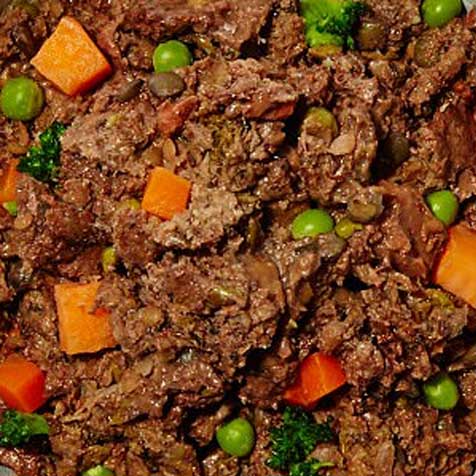 Another category of pet foods has recently started to emerge - fresh complete foods. The idea is that they provide a convenient version of home cooking so they tend to include a balanced selection of high-end fresh ingredients, cooked and packed in trays or pouches. With fresh ingredients and a low level of processing, fresh complete foods are likely to retain a high proportion of their natural nutrients, at least compared to conventional dry and wet foods. Another category of pet foods has recently started to emerge - fresh complete foods. The idea is that they provide a convenient version of home cooking so they tend to include a balanced selection of high-end fresh ingredients, cooked and packed in trays or pouches. With fresh ingredients and a low level of processing, fresh complete foods are likely to retain a high proportion of their natural nutrients, at least compared to conventional dry and wet foods.
Since no preservatives are added and since the food usually hasn't been sterilised like standard wet foods, fresh foods generally don't stay fresh for as long as we have come to expect from our pet foods. For this reason, most fresh pet foods need to be kept refrigerated even when sealed. In the fridge they typically last up to 14 days from the date of manufacture but they can also be frozen and defrosted later before feeding.
Find fresh dog foods
Raw foods
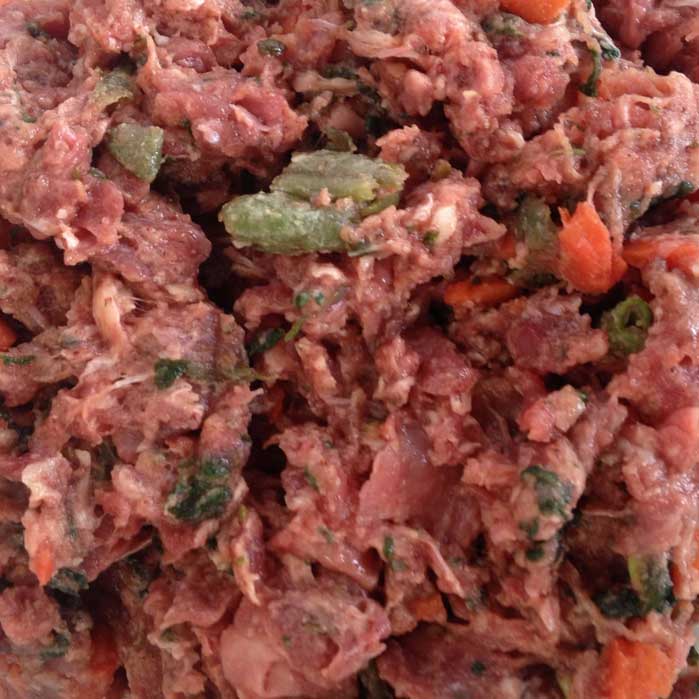 If you have noticed the growing number of freezer units popping up in pet shops, raw foods are the reason. Raw feeding is regarded by many as the most natural way to feed a dog and over the past decade or so it has become the fastest growing feeding trend in the UK. Many raw feeders prepare their own diets for their dogs but a growing number of companies are developing pre-prepared complete (or 'balanced' - see below) raw foods, usually in the form of frozen blocks or nuggets, which provide all of the benefits of raw feeding with all the convenience of a conventional dog food. Ok, maybe not all of the convenience - transporting frozen foods for extended periods (for holidays and so on) can be tricky and having to thaw them over-night before feeding isn't as easy as opening a bag or a tin, but most raw feeders agree that it is a small price to pay. If you have noticed the growing number of freezer units popping up in pet shops, raw foods are the reason. Raw feeding is regarded by many as the most natural way to feed a dog and over the past decade or so it has become the fastest growing feeding trend in the UK. Many raw feeders prepare their own diets for their dogs but a growing number of companies are developing pre-prepared complete (or 'balanced' - see below) raw foods, usually in the form of frozen blocks or nuggets, which provide all of the benefits of raw feeding with all the convenience of a conventional dog food. Ok, maybe not all of the convenience - transporting frozen foods for extended periods (for holidays and so on) can be tricky and having to thaw them over-night before feeding isn't as easy as opening a bag or a tin, but most raw feeders agree that it is a small price to pay.
However, raw feeding is by no means free from criticism. Many vets and industry experts have raised concerns over the safety and nutritional balance of raw foods. This is a topic of enormous, often heated discussion and is too big to cover here but we do have a great article on the subject here.
Like wet and dry foods, pre-prepared raw foods come in both complete and complementary forms but it is worth noting that a significant proportion of raw producers prefer to steer clear of synthetic vitamins and minerals, instead relying on the natural nutrients found in the right balance of meat, bone and offal (and, in some cases, fruit and veg) to provide everything a dog needs. Since these foods do not adhere to FEDIAF's guidelines for complete foods, they do not receive our 'nutritionally complete' logo. You can find out more in our guide to complete foods.
Find raw dog foods
Making the right choice
With so many options available, it's easy to see how many pet owners feel overwhelmed by it all. Every type of food described above has its own pros and cons and no one category is 'best' for all dogs or all owners. While you will certainly encounter all sorts of opinions about what you should feed, the final decision has to come down to what's best for you (personal preferences, budget, convenience, ethical considerations etc) and your dog (their individual health and their personal preference).
The next steps
Once you have decided which category of food you would prefer to feed, you can use the filters on the dog food directory to find the best options from the hundreds that are available. Take a look at our guide to making a smooth transition here. Take your time, don't be afraid to try a few options before committing to any particular regime and be sure to let us know what type of food you went for and why in the comments section below!
|
BeeBonnet •2 months ago
Semi moist isn’t listedMuhammad Abu Bakr Si •9 months ago
Which is the best food for German Shepherds? https://bestinfotips.com/best-dog-food-for-german-shepherds-with-sensitive-stomachs/legaleagle •one year ago
How does one know whether it should be grain free food and what is the benefit?Alice Bockett •one year ago
Hello, I have read all the information on the different types of processing for dry food ie extruded, air dried etc., but can anyone tell me what the cooking method "reduction" actually means? Many thanksGreg Thompson •2 years ago
Hi, since my boxer was a puppy he has had terrible guts on anything other than chappie wet, and any dry as a mixer. I have never really thought of using only dry, but this seems like it may be the best option? Or is there other foods which are known to be similar constitution as chappie? I'm finding the increases in price are starting to get a bit much so hoping to find something else (12 quid for 24 tins a couple of years ago, 27 quid now) thanksamelia brown •2 years ago
Dogs require a diet that is well-balanced and contains all the essential components, such as protein, carbohydrates, fats, minerals, and vitamins. The problem is the wide variety of products that are offered in pet stores like PetCareRx, veterinary offices, and online. This article's goal is to provide advice on how to select the best diet for your dog.Kate •3 years ago
I never thought the decision about dog food could be so overwhelming but I am finding this site really useful so thank you! I am considering moving from raw to dry and I'm not sure if this should be a gradual transition or a straight swap (I have read that you shouldn't mix raw and dry due to digestion time), can you offer any advice on this? Thanks!George Walker Kate
•2 years ago
Kate
•2 years ago
It is is nonsense. It’s perfectly ok to mix wet and dry foods. The rate at which they are digested is on no relevance.Ruth Higgins George Walker
•one year ago
George Walker
•one year ago
Kate asked about mixing RAW food with dry. Not WET food with dry. There is a huge difference between wet and raw foods. And it isn't only the rate of digestion, in this case, its the gut bacteria necessary to digest that becomes an issue.